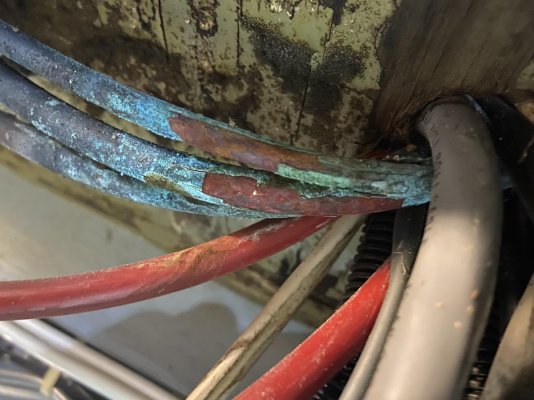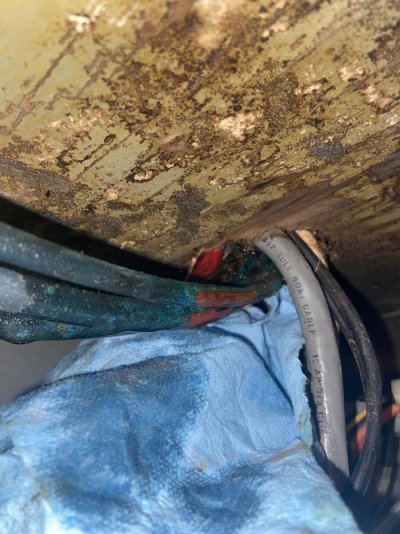ORIF
Senior Member
Can anyone comment on recommended wall thickness and/or pressure ratings needed for copper or copper-nickel tubing runs in a Teleflex hydraulic steering system on my twin rudder, 2 helm, 44 foot boat?
I've read some threads on this:
Sounds like "refrigeration" tubing is what's recommended by Teleflex if you don't buy from them. So is it wall thickness or pressure rating that makes it qualify as "refrigeration tubing"? I guess thickness and pressure rating are different ways of saying the same thing.
I just don't want to buy a roll of something that's underrated for my application.
Also, I'm hearing that copper-nickel is more corrosion resistant and easier to work with. I'm assuming I don't need to worry about dissimilar metal issues with this since everything is obviously copper compatible? I'm planning on leaving the original copper runs and replace problem runs with copper-nickel. I'm assuming a mixed system like this would be fine?
Also sounds like double flare fittings are best. I've seen the kits for these and the process seems pretty simple and I'm pretty handy. Are these fittings pretty easy to get right after a few practice tries?
My system instructs me to pressurize to around 40 psi so is that the max pressure in the system or does steering under load create higher pressures?
Thanks in advance...
I've read some threads on this:
Sounds like "refrigeration" tubing is what's recommended by Teleflex if you don't buy from them. So is it wall thickness or pressure rating that makes it qualify as "refrigeration tubing"? I guess thickness and pressure rating are different ways of saying the same thing.
I just don't want to buy a roll of something that's underrated for my application.
Also, I'm hearing that copper-nickel is more corrosion resistant and easier to work with. I'm assuming I don't need to worry about dissimilar metal issues with this since everything is obviously copper compatible? I'm planning on leaving the original copper runs and replace problem runs with copper-nickel. I'm assuming a mixed system like this would be fine?
Also sounds like double flare fittings are best. I've seen the kits for these and the process seems pretty simple and I'm pretty handy. Are these fittings pretty easy to get right after a few practice tries?
My system instructs me to pressurize to around 40 psi so is that the max pressure in the system or does steering under load create higher pressures?
Thanks in advance...


